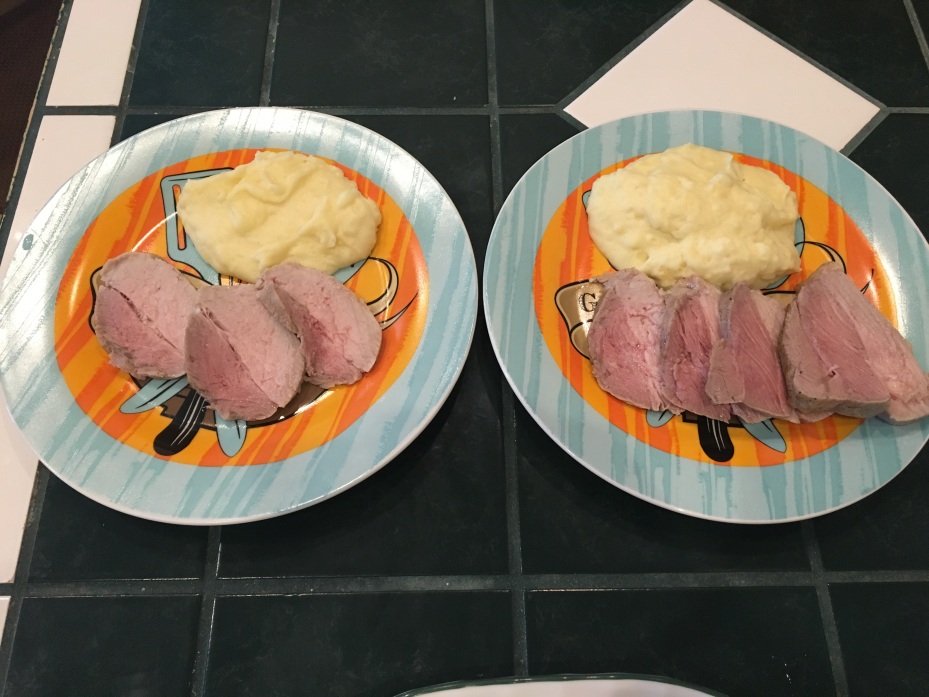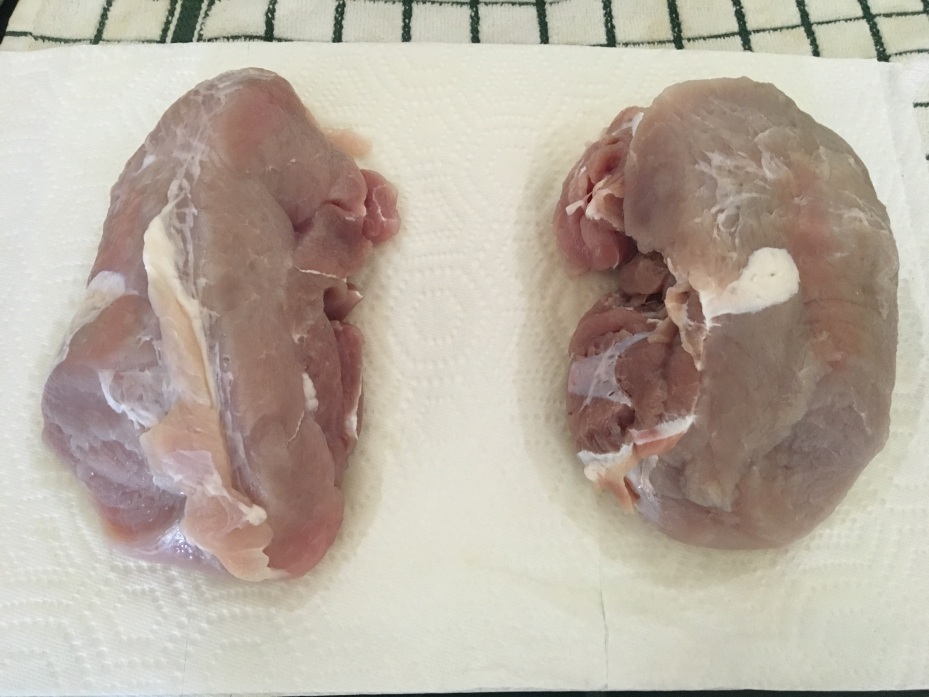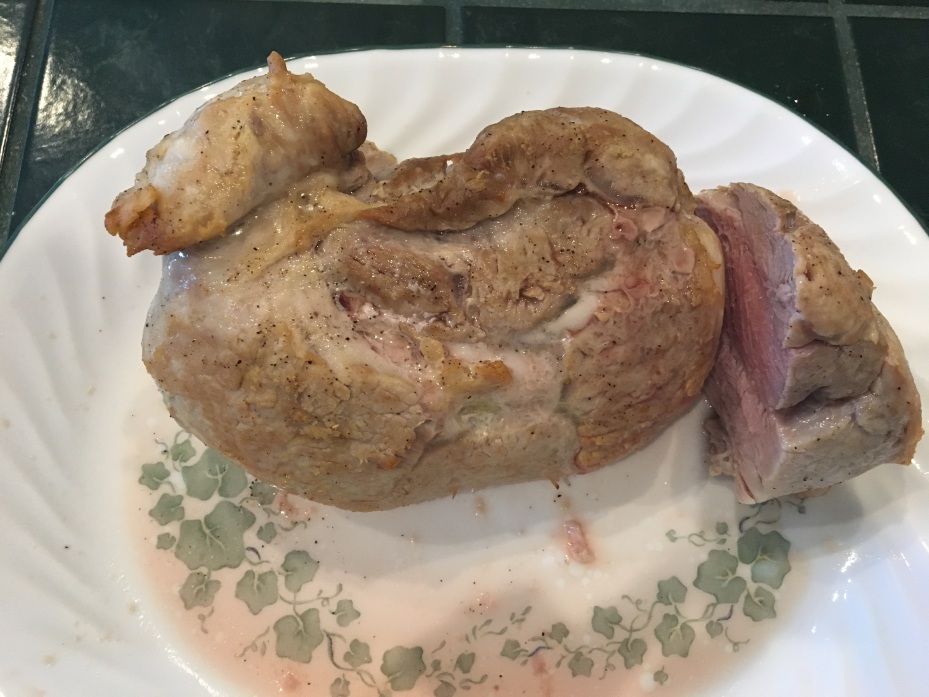Instead of listing a zillion soup recipes, I’ll just start with a base recipe that I use, along with some variants that I use depending upon the season.

WINTER: Winter is the heaviest soup season for me, living where I do in the frozen Northeast. In the winter I’ll typically leave a pot of soup on ‘warm’ heat all day long and then shut it off at night. Normally when it’s cold enough out I can just put the whole pot of soup in the breezeway and it keeps it below 40 degrees same as the fridge would. Hearty soups are the name of the game here. I tend to put some meat in every other pot I make. I put everything in one pot, except the rice, which I make and store separately, and add it to each soup bowl, and then ladle the soup on top of the rice. This keeps the rice fresh and doesn’t turn my soup into a starch-fest.
SPRING: Spring is still pretty good soup season. Especially once the wild garlic, garlic mustard, dandelions, and other spring greens start popping up. I still use meat in my soups in the spring, but to a lesser degree than in winter. I tend to switch from beans to lentils during this time period.
SUMMER: Summer is the least soup-y season for me. Though I do still make wild greens soup from time to time. When I do, I don’t usually add meat to it, and I make it into a much thinner soup. It’s typically pretty hot here during the summer, and I don’t like eating hot and warming foods like soup when it’s hot. Also soup doesn’t keep well on it’s own in hot weather, and spoils rapidly, and thus has to be independently refrigerated, taking up a large amount of room in my fridge.
FALL: Fall is when soup season starts to kick in again. Usually the end of September or the beginning of October. During this time-frame I switch back from lentils to beans, to make the soups thicker and heartier. I also start adding meat back into the soup on an increasing basis until eventually it’s every other pot or so.
Ingredients:
- Water
- Ancient Sea Salt. (Don’t skimp on this, and don’t use that white toxic iodized crap you find at the store. If you can’t find Ancient Sea Salt, use Celtic Sea Salt.)
- Potatoes (or any other starch veggie you like. I’m on a budget, and it’s winter, so I use potatoes.)
- Veggies. This can be anything you like, but should include at least one onion. I typically use an onion, 3 carrots, and 3 stalks of celery, as a base. Cabbage and wild greens are added when available or in season.
- Rosemary. I use dried, though I suppose you can use fresh if you have it on hand. Nearly anything can be made tasty with enough rosemary.
- Beans. I use pinto beans, kidney beans, or whatever is on hand. I buy bulk 20 pound bags.
- Meat. Again, whatever you like. With bones is preferred, but any meat will do. Including and especially wild game. Deer, squirrel, rabbit, whatever. Toss it in there.
How to make real basic soup:
All of my soups start with a big soup pan. I like soup, and I make enough so that it lasts my family several days at a time. You can make less or more as you desire, but the method is identical. Start with cold water, and add the salt. (See below.)
Also, be sure to use a lid with your soups. It preserves your nutrients. With a lid the evaporate turns into condensation on the lid, and will slink back into the pan when the heat is shut off. So nothing is lost. It’s making the most out of a limited resource.
I then add 1/2 of a standard coffee cup of ancient sea salt directly to the water. I know how much salt I like in my soup. You can add more or less to taste. I’d start with less and see how you like it. You can always add MORE salt. You can’t un-salt something without adding more water to it however, and it’s easier to add more salt than to try to dilute something which is uber-salty. Heat the water to boiling. I typically put my pot on 6 on a scale of 10 to do this. Add the dried rosemary. I’d say about 2 tablespoons, though I just pinch it in myself. Don’t worry, it’s not overkill. Trust me. Rosemary is a good thing.
Now that the water is doing it’s thing, you can add some of the veggies. I add the potatoes first. I use 3 – 5 potatoes, cubed into small pieces. Probably 1/4th of an inch across. You can go larger if you like. Next add the onions, sliced and then cubed the same way. Then the carrots and celery. I cut the carrots in half lengthwise, and depending on size, half again lengthwise. Then chop as you did the onion and follow suit as you did with the potatoes and onion. Celery is done the same way, except that you don’t need to cleave it in half first, as it’s a stalk and not a root veggie. You can usually get three strips out of a large celery stalk. Chop semi-finely.
I then add wild greens if available. This can be anything you like. I typically use dock, dandelion, plantain, wild garlic, thistle if available, and sometimes a little bit of garlic mustard. I’ll throw in anything that’s in season though, from fiddleheads to violet blossoms and leaves. If it’s edible, it goes in the pot.
Next add the meat. Mine is usually frozen, so I add it last, as the soup will take a while to boil again after you add all those veggies. Once it’s going good again, just add the meat whole whilst still frozen. I get my meat bulk and then I re-wrap it in freezer paper so that I can add it to soup without messing with it. I just open the freezer paper, extract the meat from the waxy surface, and in the soup it goes. Ground meat works especially well for this. If you use ground meat, you’ll need to pull the meat out of the pot after a few minutes and chop it up fine with a knife on a cutting board.
If you use boned meat like chicken, or more solid meat, like a chunk or roast, once it’s cooked and falling apart or off the bones, you’ll need to pull it out of the soup and flake it with a fork. I use two forks. One to hold, one to flake. Then bones and meat all go back in the soup.
The last thing that goes in, is the beans. If you knew you were making soup the night before, you can soak your beans in a pot of water overnight, drain, rinse, and then add directly. Or you can speed-soak them. This involves boiling a pot of water, adding the beans, boiling them for a few minutes, shutting the pot off, and letting them sit for an hour or so. Then drain, rinse if desired, and add to soup. If you do it this way do it BEFORE you start your soup, so the beans will be on hand and you won’t have to wait an extra hour for nothing.
An hour or so later, it’ll be done and ready to go. I serve mine over rice. I make the rice separately though, that way the soup pot at large doesn’t get all ‘starchy’. I think it tastes much better this way.
Some additional soup ideas…
You can also sometimes take your leftovers and turn them into/add them to soup. This not only saves you a huge amount of time and effort in preparation, but makes the most of your resources in these economically shazzy times.
An example:
I visited a friend last year who was new to foraging. They were interested in seeing how it could be incorporated into their daily life, so I proposed a little game during our construction of dinner.
The game was that the meal could only contain ONE item that was store bought and not foraged for. The leftovers would then be made into soup the next day. Cooking oil and basic spices not included. (In other words the olive oil and salt and pepper didn’t count.) I buy my ancient sea salt in bulk in 20 pound bags, and I buy my peppercorns in bulk as well. You should have enough of both on hand to last you a year of daily cooking use, and you can acquire such for about $30 or less.
Day 1: The Meal
First I put some olive oil in a frying pan, cubed up three medium sized potatoes. The potatoes were grown from their garden, so they were an allowed ingredient. After the potatoes were almost done, I added some lovely boletus that I found growing on the property, chopped and cubed into small pieces. In a separate pan, also with some olive oil, I put in some frozen deer meat that my friend supplied from their hunt the prior year.
(Thankfully they had the sense and skill to clean their own deer. I had actually helped them with it, as they were going to take it to a butcher. I said… “Butcher? PFFT. C’mon son, it’s time you learned a thing or two…” And so I showed them how to cut up and package a whole deer into nice little freezer sized packages. It’s amazing what you can do with a sharp knife, masking tape, and some freezer paper. They were amazed that I didn’t need a saw and processed the whole deer with just a single knife, that I sharpened a few times as I went. Flabbergasted, even. Some people’s kids, I tell ya. 😉 )
Anyway, they had some of that left, so we took a little over 3/4 of a pound of neck meat strips, thawed them out, cut them up finer, and then added them to the pan.
This in turn, was served over a bed of rice. It was delicious. You carb conscious folks are probably going ‘Ay-yai-yai-yai-yai!’ right about now. Whatever, you eat what you eat, I’ll eat what I want to eat. It’s all about moderation what what your diet consists of. Different folks require different amounts of certain things. I used to think that I was a ‘protein’ type, but I later found that’s not the case with me at all. If I eat more than a certain amount of meat, I start to feel less than well and have difficulty digesting, and passing, said meat. So, I include meat in my diet, but as part of a balanced whole. Oh, I’ll nom a steak from time to time, no doubt. But I don’t eat meat products for breakfast, lunch, dinner, and snacks like half of America does.
That being said, I do luvs mah bacon. 😀
I don’t have issues digesting bacon. Only denser, more solid meat. Like if I have meat for lunch, and then a big steak for dinner, digestive problems are in the forecast for the next morning, guaranteed. Maybe it has something to do with the fat content, or lack thereof. I always eat all the fat on all the meat I consume. It’s good for ya. Moreso than the meat, in fact.
But I digress…
Day 2: The Soup
What we had left over was probably one bowl’s worth of meat, potatoes, and mushrooms. Even with rice, that’s not enough to feed several people a second time around.
So, it was soup time. Also, as part of the rules, ‘leftovers’ do not apply. All leftovers are fair game, and any quantity may be used, as it is considered making the most of otherwise wasted resources. Feel free to mix and match if you have numerous leftovers available from numerous sources.
First off I went looking in their yard for what I could find. I came back in short order with a few big leaves of dock (Rumex obtusifolius), a big fistful of dandelion greens, some plantain, a small handful of violet leaves, a whole small thistle plant complete with root, and a few bulbs of wild garlic. This took a whole 5 minutes or so. They were shocked that all this food was just sitting there in their yard, and that they mowed it down, weekly.
It took longer to clean the stuff than it did to collect it.
It all got chopped up and added to the soup. Except the thistle root. That was put in whole as it was a bit woody, and later removed and discarded after the outer layer had turned smooshy and left only the woody core.
The leftovers from the prior day were then added directly to the soup. (This would be the deer, boletus, and potatoes)
I then took a half pound package of the toughest neck meat they had left in the freezer and put it in the soup. (Following the basic soup instructions above.) It cooked for about 3 hours total.
The deer meat came out more tender than the finest fillet mignon I have ever had. And this is from a ‘tough’ cut of meat that most would have ground into burger. It’s all in the preparation. It literally was so tender that it melted in your mouth. And the flavor was incredible.
As usual, I served it over a small bowl of rice. The folks I made it for proclaimed that it was the “Best GD soup I’ve ever had.” And GD didn’t stand for “Green Deane” in that instance. 😉
It’s amazing what you can do with nature at your doorstep, and otherwise wasted leftovers.
Thus, I am a big proponent of soup. We could feed the world with soup. Or at least, all of our family and loved ones, no matter the economic circumstances.
It’s the difference between surviving and thriving during tough times. If you can thrive during the worst of times, you’ll do incredible during better times.

























